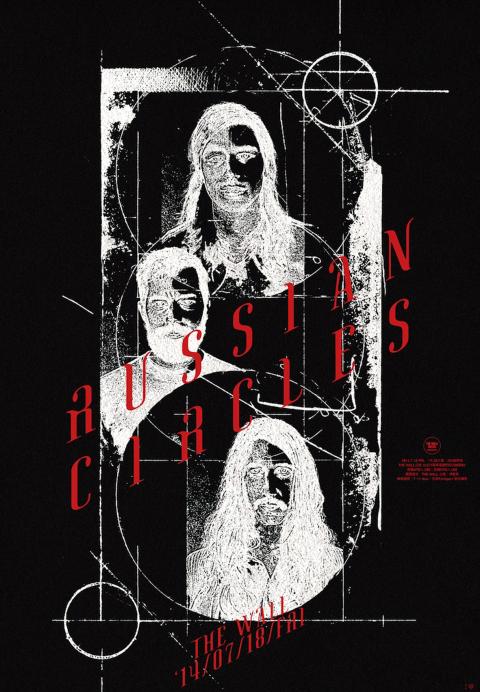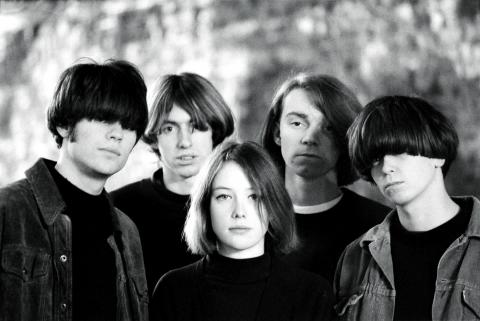Summer is the season of music festivals. You may have noticed that Taiwan’s festival calendar looks drastically different this year, especially since none of the action is happening in Taipei. Instead of Formoz and the Twinkle Rock Festival, which brought top acts like XX, Suede, Bjork and others coming through for the big Japanese festivals, we have two relatively modest first-year events in central Taiwan, the Wake Up Festival in Chiayi from July 25 to July 27 and the Heart Town Festival in Greater Taichung from Aug. 8 to Aug. 10 (cmdtaiwanfest.com). Both feature at least 100 bands over three days, including some pretty great bands from Japan, Hong Kong and elsewhere in the region. Look for more coverage over the next two weeks. They should be well worth the cost of a High Speed Rail ticket.
Formoz and Twinkle Rock have disappeared on the heels of rough financial years for both organizers. Formoz was organized by The Wall, a scene-leading livehouse in Taipei. Last fall the venue changed owners, and the fallout included a conflict over the two festivals, Formoz and the Megaport Festival in Greater Kaohshiung. Both events went on hiatus this year.
The Wall has said it will revive them but with new names. There is still no sign of a re-launch schedule. Twinkle Rock was organized by Very Aspect, which lost big last year when Aerosmith cancelled its Greater Kaohsiung concert, and has since experienced a management shakeup.

Photo courtesy of The Wall
HO-HAI-YAN ROUNDUP
The Ho-Hai-Yan Music Festival, a free government event held for the 15th year on a beautiful sand beach in northern Taiwan finished last weekend, with media reporting attendance of over 870,000. This attendance statistic is staggering. If true, it would definitely prove that Taiwan has one of the most rocking populations in Asia, with one in six residents from Taipei or New Taipei City rocking out at the beach for this massive concert, leaving northern Taiwan a virtual ghost town, just to see a bunch of bands most residents have never heard of.
Japan should be jealous. Coachella and Glastonbury should be in awe. Ho-Hai-Yan calculates this awe-inspiring total by looking at “individual visits.” In other words, bored, over-heated volunteers — usually high school or college students — stand at checkpoints and click a counter every time someone walks past.

Photo courtesy of The Wall
So if you walk past the counters 10 times in a day, which is possible, since there is plenty to do outside the festival area proper, like beer runs to 7-Eleven, you will count as 10 people. As for the real attendance, this is really anybody’s guess. Whatever the total, the event is still the largest music festival in Taiwan. Being free and at the beach are its indisputable advantages.
Ho-Hai-Yan hosts an award for Taiwan’s best indie band, determined by a juried battle-of-the-bands competition taking place in several stages. This year’s winner of the top prize was KyRa RAY (光. 樂團). It’s the second time in a month Taiwan has given a major band award to a new, relatively unknown group that is already signed with a management company and seemingly groomed for the pop industry. Last month, the Golden Melody Awards handed the Best Band prize to Mixer (麋先生).
When KyRa Ray accepted their Best Indie Band award at Ho-Hai-Yan, they almost echoed Mixer’s sentiments: “You have probably never heard of us before, but …” It’s enough to make one wonder whether the music industry, which has been desperate in recent years to elevate new stars, is now trying to manipulate band awards to feed the machine. Historically, Ho-Hai-Yan’s awards have gone to bands that came up through the indie live house scene, like Sodagreen, White Eyes and Tizzy Bac.
KyRa Ray is a four-piece band fronted by Australian-born vocalist KyRa. In some ways they seem to be a stab at Taiwanese version of visual rock, the Japanese genre that mixes metal, pop, anime and goth. In addition to the stylings, KyRa also plays softer indie pop ballads in the vein of Sandee Chan (陳珊妮) or Cheer Chen (陳綺貞).
Ho-Hai-Yan’s Jury Award went to the punk band Inhuman Species, a good band that has been gigging hard through the scene hard in the last few years — in other words, an actual indie band.
RUSSIAN CIRCLES and SLOWDIVE
Russian Circles, who play tonight at The Wall, are a three-piece from Chicago carving out a niche between metal and shoegaze. Their sprawling instrumental compositions feature heavy guitar crunching and even heavier atmospherics. Some classify this music as post-metal, meaning that they interpret metal more as a sonic texture than as a reason to party.
They almost seem schooled in metal, as if they studied it at conservatory, at least as far back as Black Sabbath. Their last album, Memorium, was rated one of Pitchfork’s top 15 metal albums of 2013.
Unlike the big metal of the 80s and 90s, Russian Circles’ music is much more intimate and feels at home on the modest scale of the indie rock scene.
Russian Circles are label-mates with Deafhaven (who played Taipei a few months ago) and Boris and share a heavy, brooding sensibility. They should also appeal to fans of Acid Mothers Temple, Isis and Explosions in the Sky — just to give a few more coordinates.
■ Russian Circles plays with Scattered Purgatory tonight at 8pm at The Wall, B1, 200, Roosevelt Rd, Sec 4, Taipei City (台北市羅斯福路四段200號B1). Tickets are NT$1,400 at the door.
Can Taiwanese kids get enough shoegaze? Apparently not. The British band Slowdive, who play a sold-out show at The Wall on Wednesday, actually started their career as poster children for everything that’s wrong with the genre. When they released their first album as teenagers in 1991, the British music press slammed them and all of shoegaze as “a scene that celebrates itself.”
Sounding like My Bloody Valentine on downers, they released three albums and broke up in 1995, after only middling success. But after 10 years of non-existence, they suddenly reformed at the beginning of this year for a series of reunion gigs at big music festivals like Fuji Rock, Barcelona’s Primavera Sound Festival and Roskilde in Denmark. Is this the trajectory to becoming a “seminal legend?” I would rather see Babymetal. Let’s hope those Japanese teenage girls come back soon.
■ Slowdive plays at The Wall on Wednesday at 8pm. Tickets are sold out.

In the March 9 edition of the Taipei Times a piece by Ninon Godefroy ran with the headine “The quiet, gentle rhythm of Taiwan.” It started with the line “Taiwan is a small, humble place. There is no Eiffel Tower, no pyramids — no singular attraction that draws the world’s attention.” I laughed out loud at that. This was out of no disrespect for the author or the piece, which made some interesting analogies and good points about how both Din Tai Fung’s and Taiwan Semiconductor Manufacturing Co’s (TSMC, 台積電) meticulous attention to detail and quality are not quite up to

April 21 to April 27 Hsieh Er’s (謝娥) political fortunes were rising fast after she got out of jail and joined the Chinese Nationalist Party (KMT) in December 1945. Not only did she hold key positions in various committees, she was elected the only woman on the Taipei City Council and headed to Nanjing in 1946 as the sole Taiwanese female representative to the National Constituent Assembly. With the support of first lady Soong May-ling (宋美齡), she started the Taipei Women’s Association and Taiwan Provincial Women’s Association, where she

Chinese Nationalist Party (KMT) Chairman Eric Chu (朱立倫) hatched a bold plan to charge forward and seize the initiative when he held a protest in front of the Taipei City Prosecutors’ Office. Though risky, because illegal, its success would help tackle at least six problems facing both himself and the KMT. What he did not see coming was Taipei Mayor Chiang Wan-an (將萬安) tripping him up out of the gate. In spite of Chu being the most consequential and successful KMT chairman since the early 2010s — arguably saving the party from financial ruin and restoring its electoral viability —

It is one of the more remarkable facts of Taiwan history that it was never occupied or claimed by any of the numerous kingdoms of southern China — Han or otherwise — that lay just across the water from it. None of their brilliant ministers ever discovered that Taiwan was a “core interest” of the state whose annexation was “inevitable.” As Paul Kua notes in an excellent monograph laying out how the Portuguese gave Taiwan the name “Formosa,” the first Europeans to express an interest in occupying Taiwan were the Spanish. Tonio Andrade in his seminal work, How Taiwan Became Chinese,